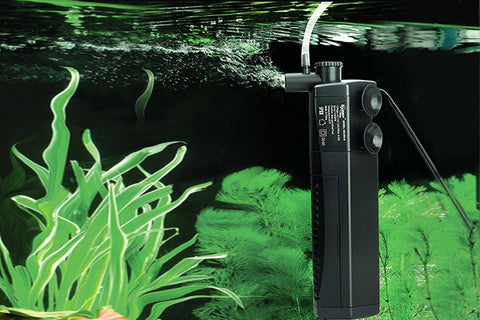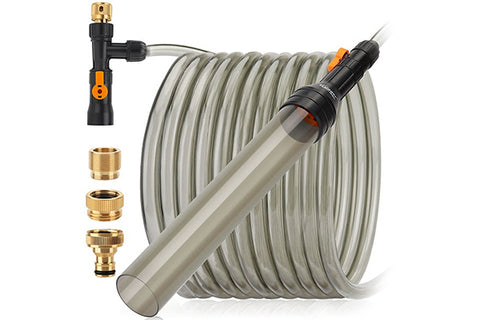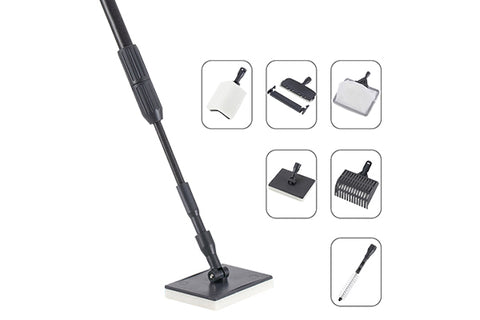Ammonia is a harmful component to your fish. It mainly comes from the waste in your tank and will bring stress and diseases to your fish.
To better control and lower the ammonia level, you should learn what it is, how to know whether the water contains ammonia or not, causes of a high ammonia level. In addition, to protect your fish from ammonia, you should learn how to get rid of ammonia.
Stick with us, you’ll know how to deal with ammonia in the fish tank after reading this article.
What is ammonia?
Ammonia is a compound of nitrogen and hydrogen with the formula NH3. It is a stable and the simplest binary hydride. It is a colorless gas with a distinct pungent smell. In an aquarium, it is a common nitrogenous waste, which has bad effects on the health of fish.
How do fish feel in a high ammonia level environment?
When you notice that your fish behave in the following ways, you should check the ammonia level in the fish tank.
- Become lethargy
- Lose appetite
- Frequently swim to the water surface
- Show abnormal behaviors, such as scratching, jumping, or shimmying
- Swollen gills and red streaks
- Inflamed eyes or anus
Causes of a high ammonia level
The main cause of a high ammonia level in a fish tank is poor water quality. And the poor water quality is the result of too much waste in the water. Thus, we should figure out the reasons for too much waste.
Overfeeding and improper feeding
Overfeeding will harm fish in different ways. Eating too much will make your fish have a fatty liver and rotten fins. Also, overfeeding will make fish produce too much waste, which will pollute the water, leading to high ammonia levels.
Improper feeding means feeding fish in the wrong way. It can be feeding fish at the wrong water level, feeding fish at the wrong time or improperly feeding fish. It will remain uneaten food in the water. If you don’t remove the uneaten food quickly, it will start to accumulate and finally cause high ammonia levels.
Thus, if you want to get rid of high ammonia levels, feed your fish properly.
Overstocking
Keeping too many fish in a small tank will also result in poor water quality. The more the fish, the more the waste. Thus, if you want to keep more fish, you need to prepare a larger tank as well as a powerful filter and do water changes more often.
An inefficient or insufficient filtration system
The aim of using a filter in a fish tank is to remove the toxins in the water, such as ammonia. If there is something wrong with the filtration system, we can not expect the ammonia level to be low.
Lack of beneficial bacteria
The beneficial bacteria can decompose ammonia into harmless components. If the beneficial bacteria in your tank is not enough, the ammonia won’t be decomposed and will accumulate in the fish tank. With time passing by, the ammonia level in your fish tank will be high.
How to lower ammonia levels in aquariums?
Check the filtration system
Some people don’t equip their tanks with a filter. If you are one of them, buy a suitable one according to the real conditions of your tank. There are various types of filters available on our store, you can browse it and see is there anything you like.
If you've already had one, try to add another one to create a more powerful filtration system.
Clean your filter if you find something clogged in it, which weakens the efficiency of the filter.
Do a water change
Water changes are vital in keeping good water quality. Thus, if you find the ammonia level is high in your aquarium, changing 30% to 50% of the tank water will be much more helpful and effective. You can see an obvious decline in the ammonia level after you change the water. Doing water changes can be easy with the help of a water changer, which can prevent your hands from getting wet.
Create beneficial bacteria
As we mentioned in the causes of high ammonia levels, lacking beneficial bacteria will bring about a high ammonia level. Thus, to lower high ammonia levels, a useful way is to create more beneficial bacteria. But how to create beneficial bacteria in a fish tank? Here are 5 simple ways for you:
- Raise the water temperature to a suitable level
- Turn on your filter
- Add filter media to your filtration system
- Do not keep the light on all the day
- Generate oxygen to your fish tank
Add some live plants
Live plants can remove much waste from the water, including ammonia. By adding live plants, you can get many benefits. Live plants can help lower ammonia levels, create a natural environment, provide hiding places and generate oxygen.
![]()
Increase aeration
The gas form of ammonia will dissolve in the water, but if you increase the water aeration, the gas will come out. Thus, you should use equipment such as water pumps, air stones, air pumps and wave makers to increase aeration.
Clean the fish tank
Clean the fish tank means removing the waste that remained in the fish tank. You can clean it by using a gravel cleaner to clean the waste sunk into the substrate and removing the uneaten food, decay plants and dead fish bodies out.
Put fish in different tanks
If the high ammonia level is caused by overstocking, you should consider putting some fish in another tank. If you don’t want to install too many tanks in your room, you can choose to update your original tank to a larger one.
How to get rid of high ammonia levels
The ways to get rid of high ammonia levels are similar to the ways used to lower the levels. Once you find out the causes and ways to lower the ammonia levels, you can figure out how to get rid of high ammonia levels.
In a word, to prevent your fish from high ammonia levels, you should pay more attention to keeping the water in the fish tank clean.
Conclusion
Except for the ammonia, the waste in the fish tank will also produce nitrates and nitrites, which are also harmful to your fish. In this article, we just come up with how to deal with high ammonia levels. But whatever it is ammonia, nitrate, or nitrite, the most effective way to control the level is to maintain good water quality.
Thus, while taking care of your fish, you should pay attention to things that will lead to water contamination. Check the water conditions daily, change the water weekly, and clean the fish tank at least once per month. What’s more, be careful with your methods of keeping fish. If you can grasp these things, fish-keeping won’t be too difficult for you.







Comments (0)
Back to Aquarium Maintenance